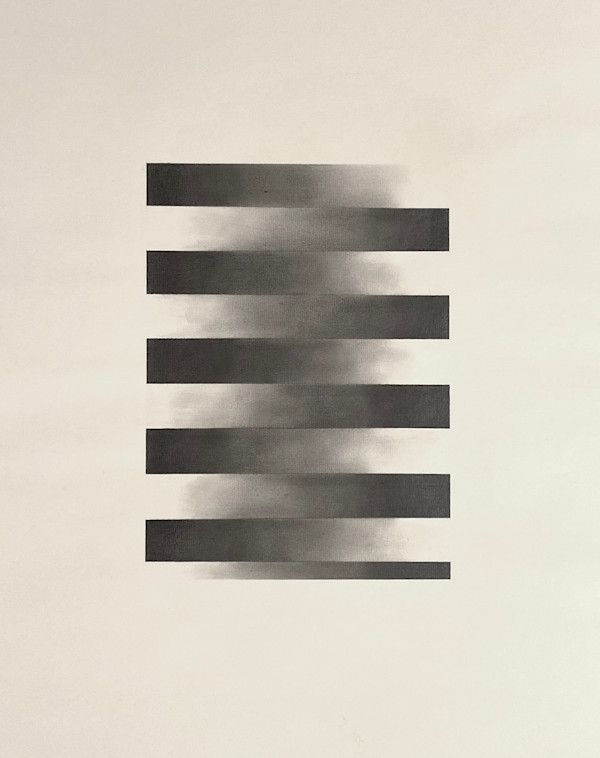1986-1987, 1993
From self-published pamphlet around the time that “Ablate” (1982) was purchased by the Skirball Museum
It is no accident that many Southern California artists work with light. We are immersed in light here, wrapped in the spectrum of the sun. Our seasons are marked not by the cyclical changes of leaves, but by variations in the angles and tones of light.
Madelin Coit paints light. She captures slivers of sky in blue and rose and silver, and casts them over broad expanses of canvas. She paints in the manner of Rococo masters, in tones unabashedly beautiful. There is no harsh white light here, none of the burning contours of the desert, none of the artificial glare of densely packed cites. Coit’s skies are made sensuous by water, by the liquid atmosphere of the coast. Clouds do not interrupt the hush of her captured light, but it is clear that water and mist and haze are dancing through the ribbons of air.
Truly, her images are ribbons of hue. She juxtaposes the rose-toned rise of dawn as it reaches into an azure dome, with scintillating ranges of gemlike noon blue. Her compositions are based on the careful arrangement of two or thee slices of unimpeded sky. The contrasts of tone and gradation are so subtle, so tightly held by reserve and finesse, that Coit’s works become models of minimalist color.
Coit works in oil. She sprays hundreds, literally hundreds, of painted layers onto each canvas. And between each coat of paint, she lays a clear layer. Light enters the surface, moves through the pigment, and bounces back. Coit paints light with light. Jan Van Eyck, the Flemish master who so loved the reflective surfaces of metals and jewels and fabrics that he developed oil paint to depict them, would be pleased with what Coit is doing five centuries later with her medium.











